Order Psittaciformes Family Cacatuidae Rank Species | Phylum Chordata Superfamily Cacatuoidea Subfamily Cacatuinae | |
 | ||
Did you know Similar Cockatoo, Bird, Sulphur‑crested cockatoo, Parrot, White cockatoo | ||
The yellow-crested cockatoo (Cacatua sulphurea) also known as the lesser sulphur-crested cockatoo, is a medium-sized (approximately 34 cm long) cockatoo with white plumage, bluish-white bare orbital skin, grey feet, a black bill, and a retractile yellow or orange crest. The sexes are similar. Lessor, the cockatoo used in the TV series Baretta, is thought to be a yellow-crested cockatoo but is actually a medium sulphur-crested cockatoo.
Contents

The yellow-crested cockatoo is found in wooded and cultivated areas of East Timor and Indonesia's islands of Sulawesi and the Lesser Sundas. It is easily confused with the larger and more common sulphur-crested cockatoo, which has a more easterly distribution and can be distinguished by the lack of pale yellow coloring on its cheeks (although some sulphur-cresteds develop yellowish patches). Also, the yellow-crested cockatoo's crest is a brighter color, closer to orange. The citron-crested cockatoo, which is a subspecies of the yellow-crested cockatoo, is similar, but its crest is clear orange.
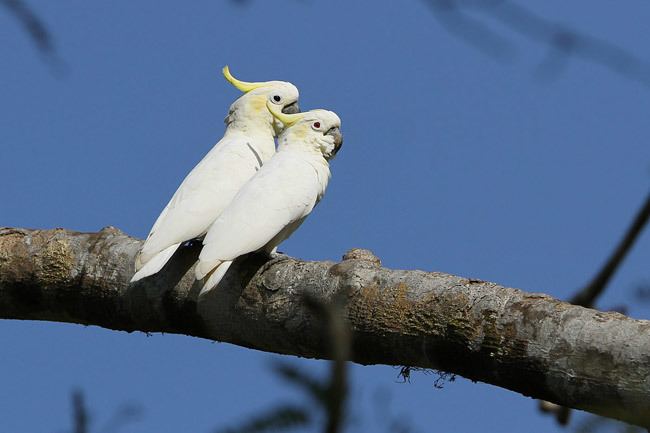
The yellow-crested cockatoo's diet consists mainly of seeds, buds, fruits, nuts and herbaceous plants.
Taxonomy
Traditionally, four subspecies have been recognized:
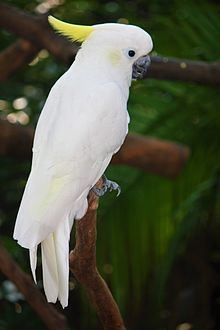
Based on recent evidence, three additional subspecies should be recognized (bringing the total to seven):
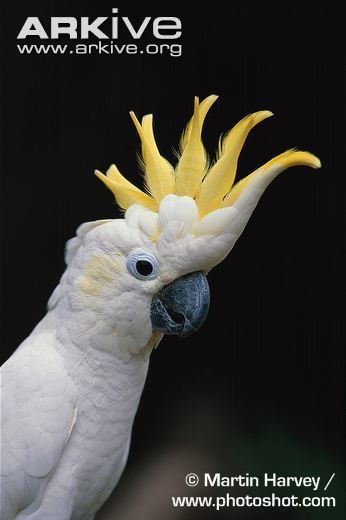
Breeding
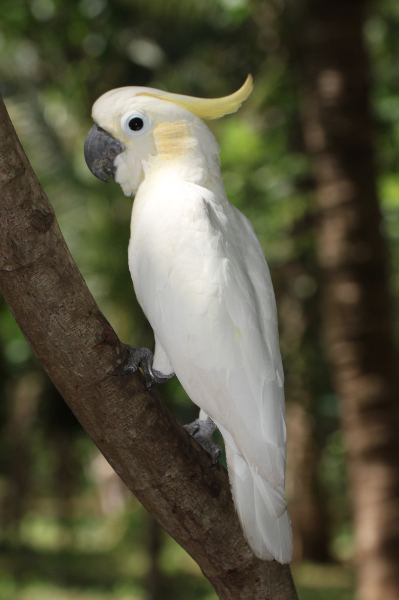
The yellow-crested cockatoo nests in tree cavities. The eggs are white and there are usually two in a clutch. The incubation is shared by both parents. The eggs are incubated for about 28 days and the chicks leave the nest about 75 days after hatching.
Status and conservation
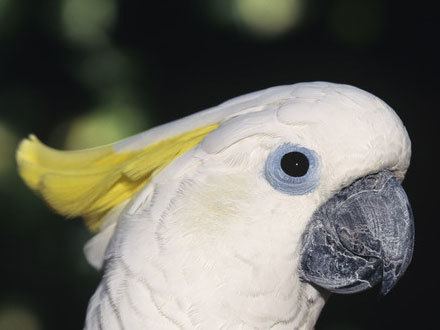
The yellow-crested cockatoo is critically endangered. Numbers have declined dramatically due to illegal trapping for the cage-bird trade. Between 1980 and 1992, over 100,000 of these birds were legally exported from Indonesia yet a German proposal submitted to CITES to move it to Appendix I was not approved. It has since been moved to Appendix I. The current population is estimated at fewer than 7,000 individuals and is thought to be declining in number.
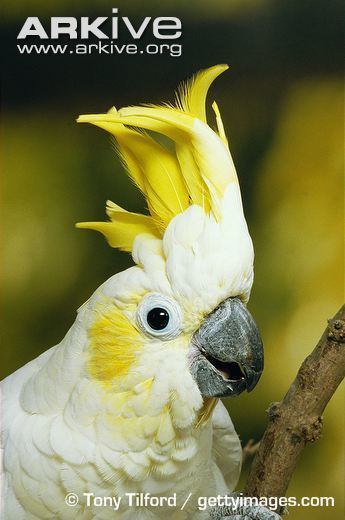
The subspecies abbotti is found only on the island of Masakambing, one of the Masalembu islands. Its population on this tiny island (about 5 km2 or 1.9 mi2) had fallen to 10 as of June and July 2008. The decline results from trapping and logging, especially of mangrove (Avicennia apiculata) and kapok trees.
Several national parks provide protection of their habitat, including Rawa Aopa Watumohai National Park on Sulawesi, Komodo National Park in Komodo Island, the national parks of Manupeu Tanah Daru and Laiwangi Wanggameti on Sumba as well as the Nino Konis Santana National Park in East Timor (Timor-Leste).
Introduced population
There is an introduced population of these birds in Hong Kong. They are a common sight across the densely populated area on both sides of the harbour, easily spotted in the woods and public parks in the north and west of Hong Kong Island. The large group has apparently developed from a number of caged birds that have been released into the Hong Kong skies over many years. An often repeated story is that Hong Kong Governor Sir Mark Aitchison Young released the Government House's entire bird collection – including a large number of yellow-crested cockatoos – hours before surrendering Hong Kong to Japanese troops in December 1941.
